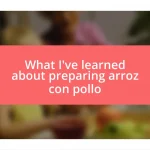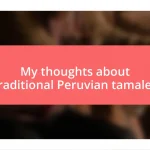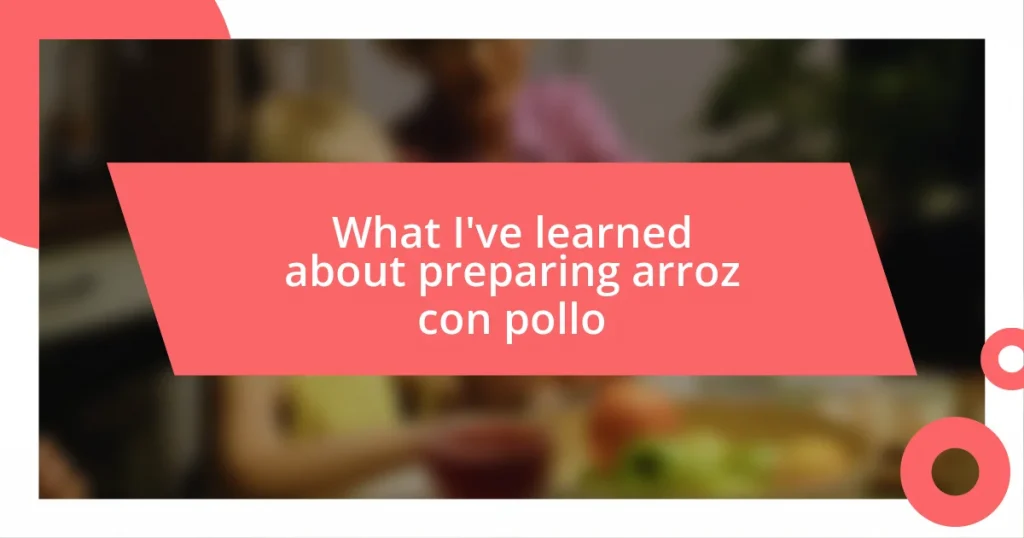Key takeaways:
- Peruvian cuisine features a rich blend of Indigenous, Spanish, African, and Asian influences, with dishes like cebiche reflecting this fusion.
- Traditional dishes such as lomo saltado, aji de gallina, and causa highlight the multicultural heritage and artistry of Peruvian cooking.
- Regional variations in flavors, from coastal seafood to highland potatoes and Amazonian herbs, showcase the diverse culinary landscape across Peru.
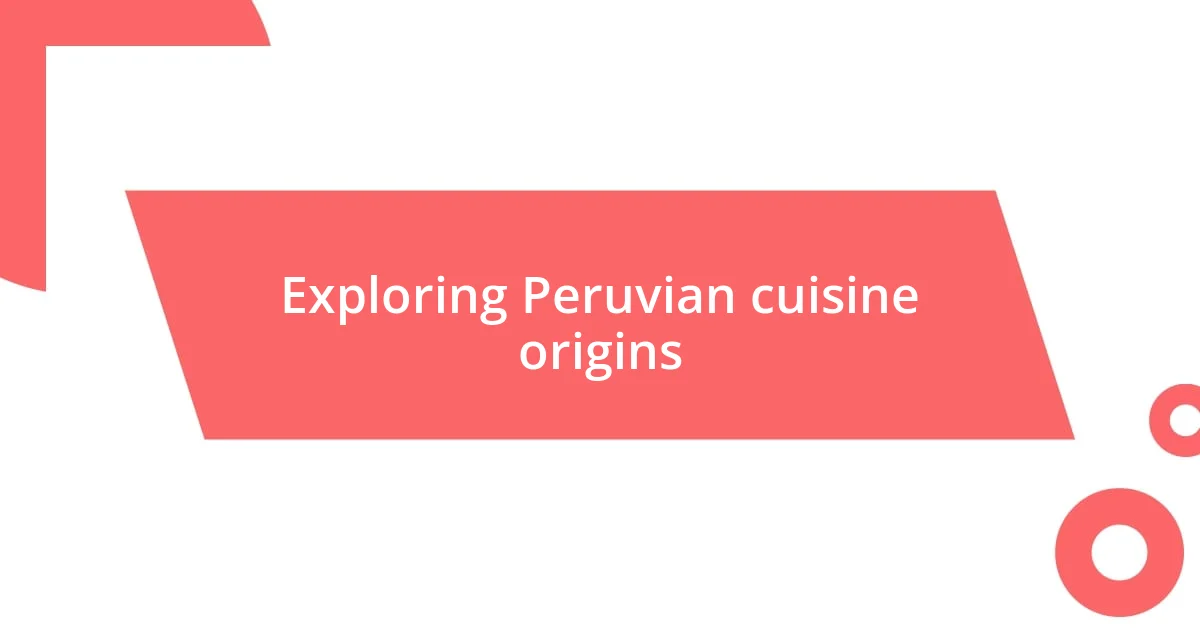
Exploring Peruvian cuisine origins
Peruvian cuisine is a vibrant tapestry woven from a rich history that spans many cultures, including Indigenous, Spanish, African, and Asian influences. I often find myself pondering how these diverse backgrounds come together to create such unique flavors. It truly amazes me how something as simple as a potato can carry centuries of stories from the Andean hills to the dining table.
Take, for example, the origins of cebiche, a dish that has captivated many hearts, including mine. When I first tasted cebiche made with fresh fish, lime, and spices, I could feel the ocean’s breeze and the warmth of coastal communities enveloping me. This dish reflects the blending of local ingredients with techniques brought by Spanish colonizers, showcasing a fusion that’s both harmonious and surprising.
As I delve deeper into the history of Peruvian food, I can’t help but feel a sense of connection to the land and its people. The ancient Incas cherished ingredients like quinoa and corn, which still play pivotal roles in modern Peruvian cuisine. Why does this matter? It shows that every bite we take connects us to generations past, celebrating not just a meal but also a legacy that thrives through time.
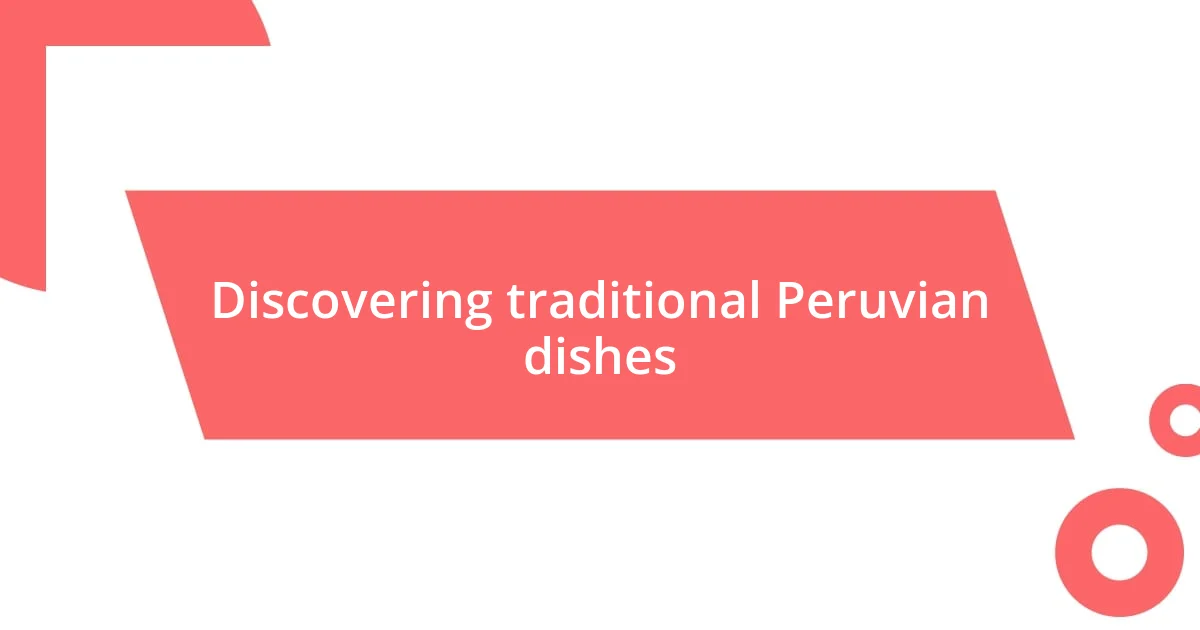
Discovering traditional Peruvian dishes
The journey through traditional Peruvian dishes leads us to some truly remarkable flavors and experiences. I vividly recall the first time I experienced an authentic lomo saltado. The stir-fry of marinated beef, tomatoes, and onion served with rice and fries felt incredibly comforting and filling. It’s like a culinary hug that perfectly blends Peruvian and Chinese influences, a testament to the country’s multicultural heritage.
One dish that holds a special place in my heart is aji de gallina. The creamy, yellow-tinged sauce made from aji peppers, chicken, and nuts wrapped me in warmth. The first time I savored this dish, I sat with friends at a local eatery, indulging in laughter and conversation. I’m reminded of how food can create unforgettable moments, binding us together through shared experiences and flavors that dance on our taste buds.
As I continue to explore, the variety never ceases to astound me. The vibrant presentation of causa, a layered potato dish, reminds me of sunshine on a plate, bursting with colors and flavors. I often think about how every ingredient tells a story—the yellow of the aji amarillo pepper, the freshness of avocados, and the textures of the fillings all working in concert. It highlights the artistry of Peruvian cuisine while celebrating the simplicity and depth of what nature provides.
| Dish | Description |
|---|---|
| Lomo Saltado | A hearty stir-fry of beef, tomatoes, onions, served with rice and fries, showcasing a fusion of Chinese and Peruvian flavors. |
| Aji de Gallina | A creamy chicken dish made with aji peppers and nuts, offering warmth and richness, perfect for sharing with loved ones. |
| Causa | A vibrant layered potato dish, combining textures and flavors from various fillings, representing the artistry of Peruvian cuisine. |
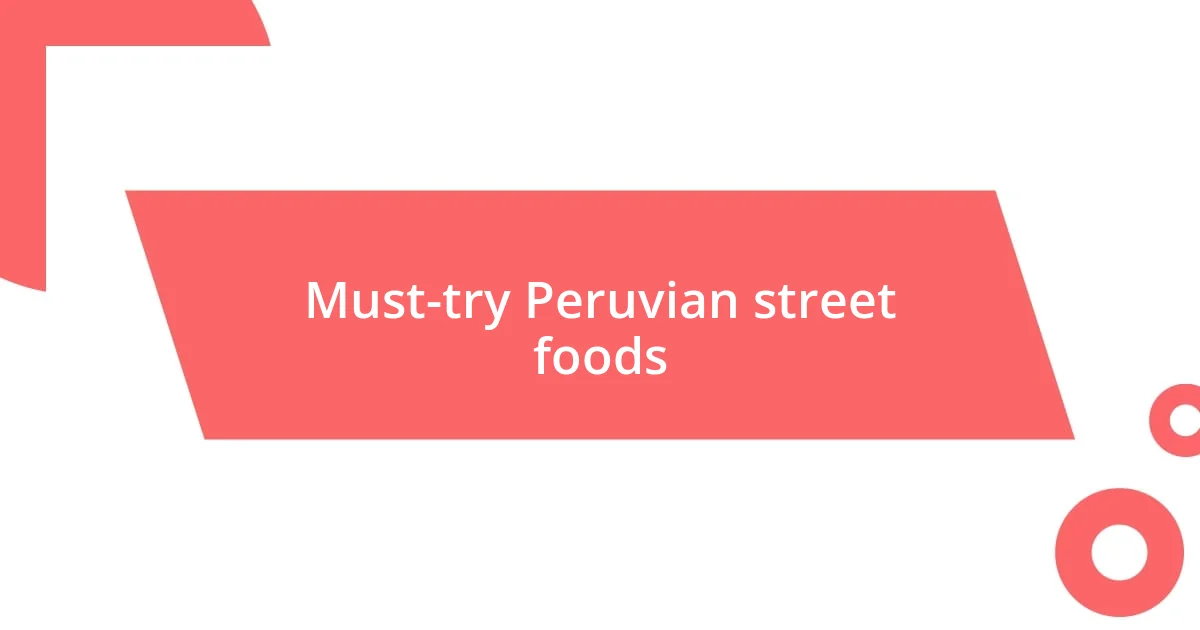
Must-try Peruvian street foods
When it comes to experiencing the heart of Peru’s culinary culture, street food steals the show. The first time I indulged in anticuchos—grilled skewers usually made from beef heart—I was taken aback by the depth of flavor infused with spices and the smoky aroma from the grill. Eating them straight from a lively street vendor while chatting with locals made the experience feel incredibly authentic. These casual dining moments create connections I cherish, reminding me of the vibrant life that pulses through Peruvian streets.
Some must-try street foods that I highly recommend include:
- Anticuchos: Grilled skewers, often made with marinated beef heart, served with a spicy sauce.
- Tamales: Steamed corn dough filled with meats or cheeses, wrapped in corn husks, offering a warm, comforting bite.
- Empanadas: Flaky pastries stuffed with various fillings, from savory meats to sweet caramel, perfect for a quick snack on the go.
- Papa Rellena: Fried mashed potato balls filled with seasoned ground beef, a delightful mix of textures and flavors.
- Picarones: Sweet potato and squash doughnuts drizzled with a syrup made of chancaca, the perfect treat to finish off your street food adventure.
These foods are not just meals; they are vibrant stories waiting to be shared, reminding me of the common ground we all seek over a simple dish.

Best Peruvian restaurants to visit
When it comes to the best Peruvian restaurants to visit, I can’t help but rave about Central. Nestled in the heart of Lima, this place takes you on a culinary journey through Peru’s ecosystems, serving dishes inspired by the country’s diverse regions. I still remember my excitement as I experienced their tasting menu, which included everything from the ocean’s gifts to the Andes’ heart. Each bite was a revelation, making me feel like I was sampling the essence of Peru itself.
Another gem I discovered is Panchita. It’s a fantastic spot for those looking to dive into traditional Peruvian flavors with a modern twist. I was captivated by the cabrito a la brasa, a roasted goat dish that was rich and full of flavor. The vibrant ambiance, accented with cheerful locals and the delicious smell wafting from the kitchen, created a cozy, welcoming environment. Have you ever walked into a place and instantly felt at home? That’s exactly what Panchita offered me.
Lastly, Maido deserves every bit of its acclaim. This restaurant bridges Peru’s culinary heritage with Japanese influences, reflecting the unique fusion of cultures that exists here. I recall trying their signature dish, which featured ingredients sourced from both lands, and it struck me how seamlessly flavors can come together. Each dish not only delighted my palate but sparked a curiosity about the origins of these ingredients. Isn’t it fascinating how food can tell such rich stories while also nourishing our souls?

Learning about Peruvian cooking techniques
Learning about Peruvian cooking techniques opened my eyes to the uniqueness of its culinary traditions. For instance, I was amazed by the technique of pachamanca, where meat and vegetables are slow-cooked underground using hot stones. Experiencing this method firsthand during a visit to a rural community was nothing short of magical—imagine the earthy smell and the excitement as everyone gathered to share the meal cooked by nature itself!
Another fascinating technique I learned about is ceviche. This dish isn’t just about marinating fish; it’s a delicate balance of timing and acidity. The first time I attempted to make it, I realized how crucial the freshness of the ingredients is; nothing else compares to the vibrancy of freshly caught fish, lime, and herbs. Have you ever tasted something so fresh it felt like a burst of the ocean on your tongue? That’s the magic of ceviche right there.
I also grew fond of sofrito, a foundational technique used in many Peruvian dishes. The combination of sautéed onions, garlic, and spices creates an aromatic base that truly elevates the flavors of the meal. One evening, while preparing a family-style dinner, I found myself completely immersed in the chopping and stirring, and it struck me how much love goes into even the simplest of dishes. Isn’t it incredible how cooking can transform a matter-of-fact activity into an act of creativity and connection?

Understanding regional variations in flavors
Regional variations in Peruvian cuisine are a treasure trove of flavors, each telling its own story through the ingredients and techniques used. For example, when I tasted food from the coastal regions, I was struck by the robust use of seafood, especially tiradito, which highlights fish that’s sliced rather than cubed for ceviche. Have you ever enjoyed a dish that felt like an embrace from the sea? That’s exactly how I felt with each bite of the perfectly fresh fish paired with zesty toppings.
Moving to the highlands, everything changed. The earthiness of ingredients like potatoes and corn captivated me, especially in dishes such as papas a la huancaína. I vividly recall a festival in the Andes where locals shared their secrets of preparing this creamy, spicy sauce. The warmth of their hospitality resonated as much as the flavors did. Isn’t it amazing how food can create connections between cultures and histories?
Then there’s the Amazon, where the food feels alive with unique components like juanes, a chicken and rice dish wrapped in banana leaves. The first time I tried it, I was overwhelmed by the blend of herbs that floated through the air, teasing my senses. Each region’s rich agricultural bounty profoundly influences its culinary landscape. Have you ever experienced a flavor that reminded you of a distant memory? That’s what the regional dishes of Peru evoke in me—a sense of belonging and exploration all wrapped in a meal.
